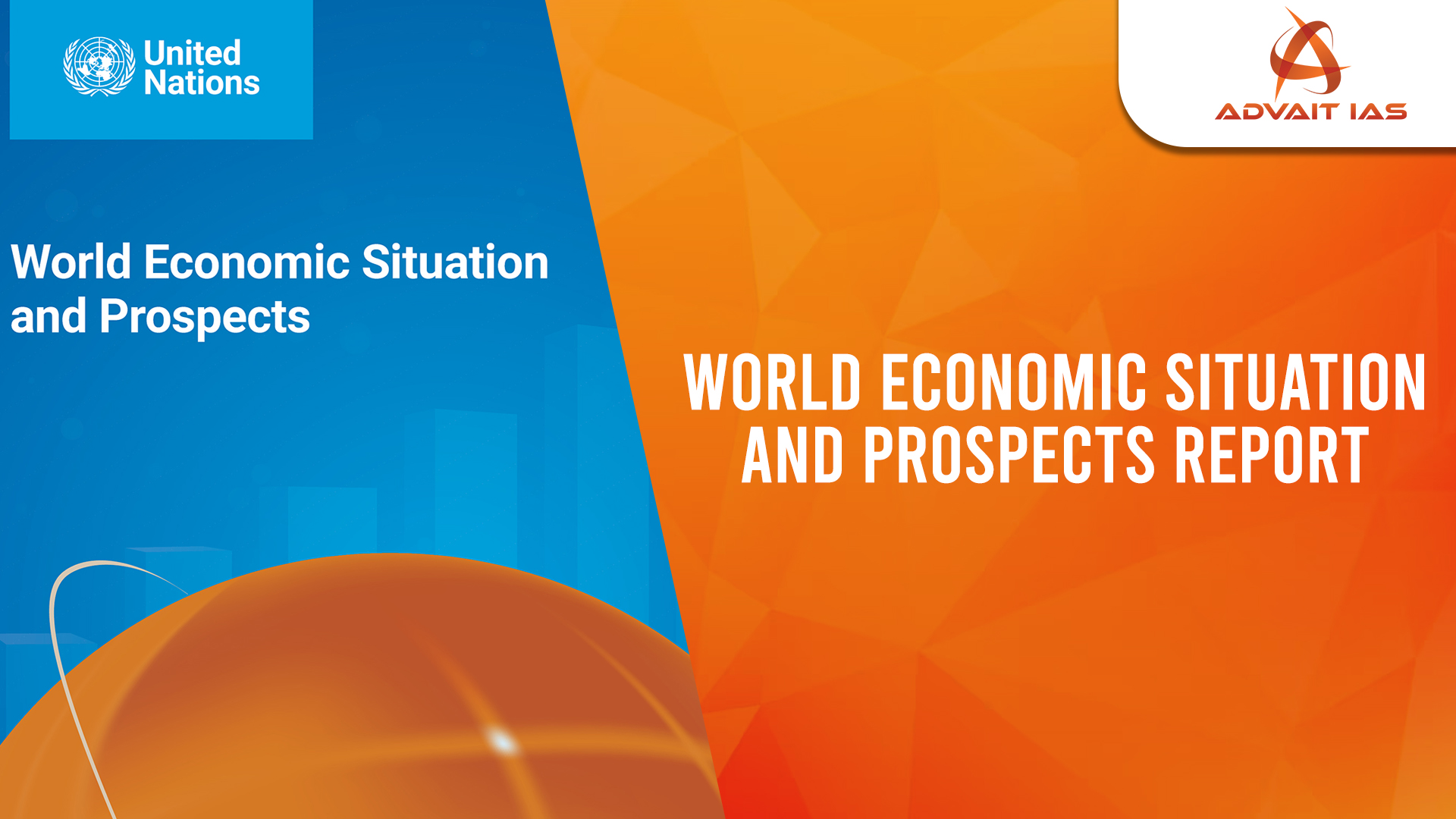The World Economic Situation and Prospects (WESP) report, mid-2025 update, revised India’s GDP growth forecast for 2025 down to 6.3% (from 6.6% earlier).
- Despite the downgrade, India remains the fastest-growing major economy.
- The report is jointly released by the UN Department of Economic and Social Affairs (UNDESA), UNCTAD, and five UN regional commissions.
Key Takeaways from the WESP 2025 Mid-Year Update
India-Specific Observations
- Growth Outlook:
- GDP growth revised to 3% in 2025 (down from 7.1% in 2024).
- Growth projected to reach 4% in 2026, highest among major economies.
- Inflation & Monetary Policy:
- Inflation to decline from 9% (2024) to 4.3% (2025), remaining within RBI’s target range (2–6%).
- Indicates effective monetary management.
- Employment Trends:
- Unemployment remains stable.
- Persistent gender gap in labour force participation remains a structural concern.
- Key Growth Drivers:
- Manufacturing GVA: ₹27.5 lakh crore in 2023–24.
- Exports:
- Total exports (2024–25): USD 824.9 billion
- Services exports: USD 387.5 billion
- Non-petroleum merchandise exports: USD 374.1 billion
- Defence Exports:
- Tripled in value; exports to nearly 100 countries, showcasing trust in Indian defence manufacturing.
Global Economic Outlook
- Global GDP Growth:
- Projected to slow to 2.4% in 2025 (from 2.9% in 2024), rising marginally to 2.5% in 2026.
- Reflects slowing momentum across advanced and emerging economies.
- Country-wise Outlook:
- United States: Growth decline expected due to tariff shocks and policy uncertainties.
- China: Growth to slow to 6% in 2025, due to weak demand, real estate stress, and export disruptions.
- Other Emerging Markets (EMEs):
- Brazil, Mexico, South Africa face downgrades due to sluggish trade and investment.
- Least Developed Countries (LDCs):
- Growth to fall from 5% (2024) to 4.1% (2025).
- Affected by low export revenues, ODA decline, high debt, and tightened financial conditions.
Major Global Economic Challenges
- Food Inflation & Insecurity:
- Driven by climate change, currency devaluation, trade protectionism, and supply chain issues.
- Affects 343 million people globally; 9 million at famine risk in Gaza, Haiti, Mali, South Sudan, Sudan.
- India, where food is a major household expense, is significantly impacted.
- Trade Disruptions:
- Rising US tariffs have triggered a “tariff shock,” escalating trade costs and supply chain disruption.
- Hits developing economies hardest and undermines multilateralism, increasing global inequality.
About UNDESA
- UN Department of Economic and Social Affairs (UNDESA):
- Established in 1948, part of the UN Secretariat.
- Leads the UN’s development pillar, supporting implementation of the 2030 Agenda and SDGs.
- Provides data, analysis, and policy advice on economic, environmental, and social development.
- Serves as the secretariat to:
- ECOSOC
- UN General Assembly
- High-Level Political Forum (HLPF) on Sustainable Development
- Key Role: Acts as a bridge between international commitments and national action plans.
Important Economic Reports and Publishers
| Publishing Body | Key Reports |
| World Bank | Global Economic Prospects, World Development Report |
| IMF | World Economic Outlook, Global Financial Stability Report |
| WEF | Global Competitiveness Report, Global Risks Report |
| UNCTAD | World Investment Report |
| UNDESA | World Economic Situation and Prospects (WESP) |






